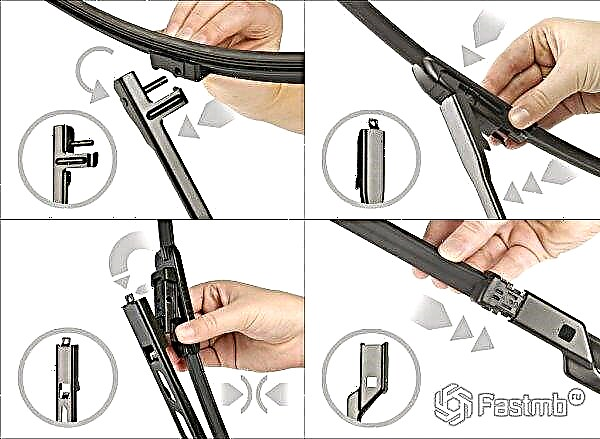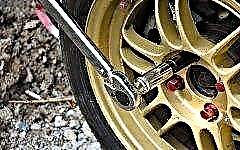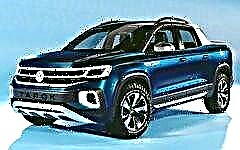Racking your brains over how to add power to your iron horse? Consider installing an intercooler first. Read what it is, how much it costs and how it works.

Turbocharged engines are constantly being improved by engineers. One of the main fundamental devices of this type is the intercooler.
Intercooler - why is it needed?

With turbocharging, the intake air is highly compressed. Naturally, during compression, the density increases, the temperature of the air mixture also increases significantly (up to almost 200 degrees Celsius). In addition, the air is heated by the turbocharger itself (its temperature is increased by the exhaust gases). As the temperature rises, the opposite process occurs: the air density decreases. As a consequence, the boost pressure decreases. It is to reduce this temperature that the intercooler is used. He is able to lower it by 50-60 degrees. The cylinders are filled with more air, the power of the car increases. It is believed that with a decrease in temperature by every 10 degrees, the power increases by 3%. The intercooler is able to increase the engine power of a car up to approximately 20%. This reduces the likelihood of flue gas detonation.
Intercooler: design, principle of operation and types

The intercooler is constructively mounted between the intake manifold and the compressor. The device is a heat exchanger, which consists of a complex system of tubes and plates made of aluminum or copper, which have high thermal conductivity and heat transfer. The tubes have an ornate structure, which increases the overall length through which air travels. The fins increase surface area and provide better heat dissipation. Final reservoirs are used to better distribute air in the tubes. They are welded at the edges.

Pictured is an intercooler mounted above a Subaru engine.
An air-cooled intercooler is usually installed under the hood of a car in the following places:
- behind the front bumper. An air intake is cut out in the bumper (the most popular and effective method);
- above the engine (the air intakes are then in the hood);
- on the sides of the wings (air intakes are made in the same place).
In addition, there are intercoolers with liquid (usually water) cooling. Although there are unique designs with liquid nitrogen or ice cooling. In comparison with the air one, it has a more complex structure. In addition to the water heat exchanger, there are such elements: a water pump, a control module, an air radiator and a pipe system.At the same time, a water-type intercooler has a number of significant advantages: firstly, it is more compact (it can be installed anywhere under the hood, no air intakes are required), and secondly, the cooling processes are more efficient and faster than with air cooling. However, when the coolant heats up, the efficiency drops. Together with the engine cooling system, the water intercooler forms a dual-circuit cooling system.
For each particular engine, in fact, a unique intercooler with a special design is needed. When designing it, you need to determine many design parameters:
- heat exchanger area. The larger the total area of all tubes and plates, the greater the efficiency of the intercooler. Moreover, for each engine there is a certain optimal value of the area, after which any increase in it leads to a slight increase in efficiency;
- internal section. Air pressure losses in the intercooler should be kept to a minimum. For this, it is important to determine the optimal section;
- heat exchanger thickness. Very thick walls are not the best option, everything has its own measure;
- frontal area. The larger this area, the more air will pass through the intercooler, which means that the cooling capacity will be higher;
- the shape of the pipes. Flow losses occur in pipe bends and transitions. For transitions it is best to use tapered segments, for bends - the maximum radii;
- connecting pipes. Leaking pipe connections will definitely cause pressure loss during boost, so it is important to have reliable connections. In addition, the material of the pipes must be resistant to the aggressive effects of gasoline and oil, high temperatures;
- direction of flow in the heat exchanger.
Approximate prices for intercoolers for cars

There are intercoolers for different car models. For example, a frontal intercooler for domestic VAZs can be bought for 3,500? 5400 rubles. The price depends on the diameter of the inlet, the size of the working area, workmanship and manufacturer. A VAZ liquid-cooled intercooler costs about 5000-7000 rubles.

The cost of intercoolers for foreign cars is, of course, higher. For example, installation for a VW Jetta or Audi A3 will cost about 50,000 rubles.

The photo shows an intercooler for the NISSAN GT-R R35, the price is 262 thousand rubles.
For sports cars, intercoolers are very expensive. For example, a unique HKS Intercooler kit for SUBARU IMPREZA GRB will cost you 120,000 rubles, for MITSUBISHI EVO 8 - 98,000 rubles, TOYOTA SUPRA - 118,000 rubles, NISSAN GT-R R35 - from 250,000 rubles. and more!
There are also universal intercoolers that can fit different car models. The price for such devices starts at 4,000 rubles.
Thus, the intercooler is a very important element of a turbocharged engine. In fact, it is able to increase engine power by 15-20 horsepower.











